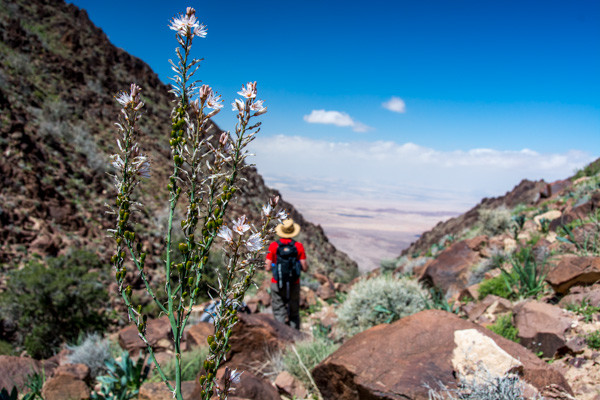
This post is part of the Digital Nomad project with National Geographic Traveller.
No pain, no gain.
My feet and my calves were letting me know in no uncertain terms that I’d far exceeded my normal level of physical activity. By the end of the second day I’d covered around 40 kilometres on uneven paths, climbing up to over 1,000 metres above sea level on at least 3 occasions before dropping to valley floors and walking along dried river beds and through narrow canyons.
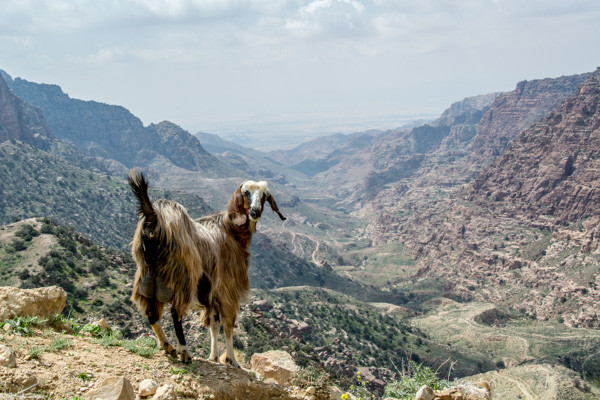
It was the promise of the reward at the end which motivated me to keep walking and scrambling for the three days of our 60-km trek. We were walking from Dana to Petra, considered one of the best hikes in the Middle East and part of the Abraham Trail which runs for 1,000 km across Israel, Jordan and Turkey (the Syrian section is sadly off limits for now). Although our route was a slightly truncated version of the classic 6-day trek, we were pretty much squeezing 5 days of hiking into 3 long days.
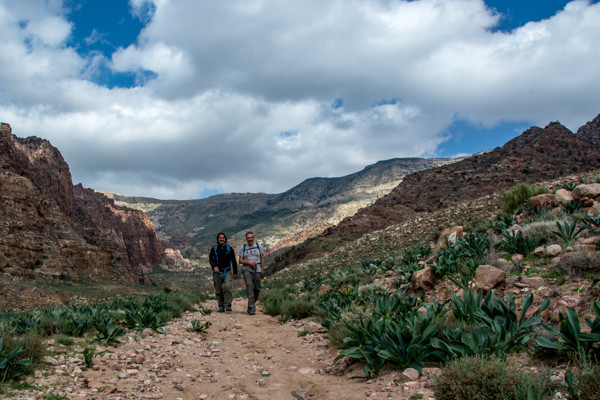
From the moment I knew that the trek was part of our itinerary in Jordan, I was excited at the prospect of entering Petra by walking through its back door. What I hadn’t anticipated were the rewards we’d also experience along the way.
Led by our guide Murad Arslan from Terhaal Adventures, we started what was a relatively simple first day at the head of the Dana Valley, surrounded by the mostly abandoned, Ottoman-era stone houses of Dana village. We were walking to Feynan Eco Lodge, 14 km away at the bottom of the valley. Our trail followed the contours of the river valley, dropping steeply at first before winding alongside the dried water course, with the descent of almost 1,000 metres reflected in the transformation in vegetation, from the arid Eastern Desert landscape to the juniper and oleander trees of the lower Sudanese terrain.
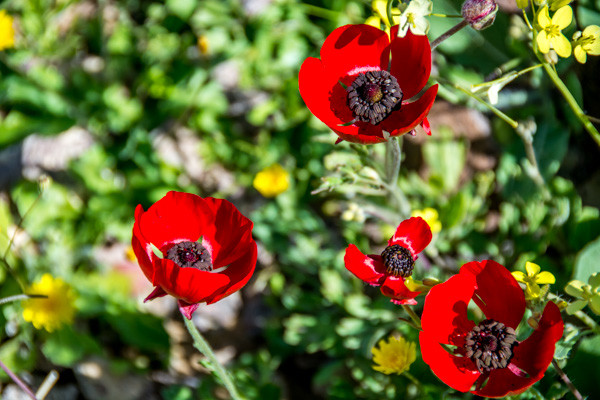
If our first day was a gentle introduction, the second day was altogether more challenging. We started from Abu Sakakeen and climbed twice from the valley floors to mountain peaks, on largely unmarked paths which would have proved very hard to find by ourselves. We started later than Murad had hoped and as we walked he pushed us on, increasingly conscious of the distance we still had to cover before sunset.
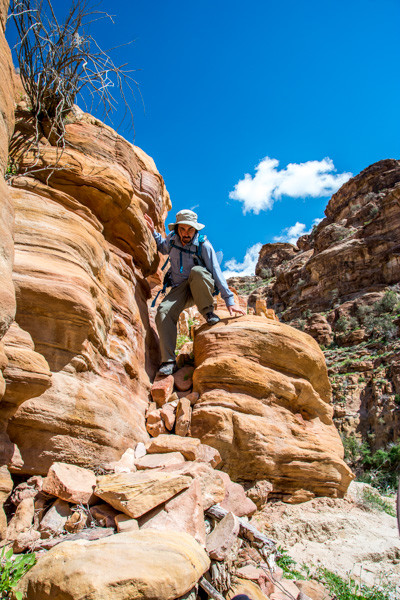
The views across Wadi Araba, part of the Great Rift Valley, were an irresistible distraction, and I kept stopping to look back and admire the panorama which stretched for many miles westwards, well beyond the Israeli border. Murad pointed out the dark areas on the far side of the valley, irrigated land on Israeli kibbutzim; we watched as first a group of starlings then a pair of migrating falcons passed overhead and circled the sandstone cliffs.
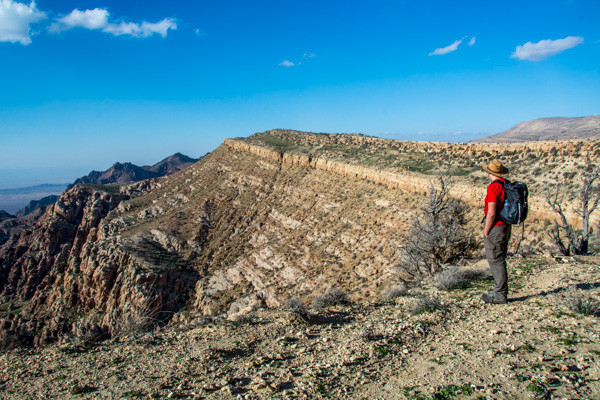
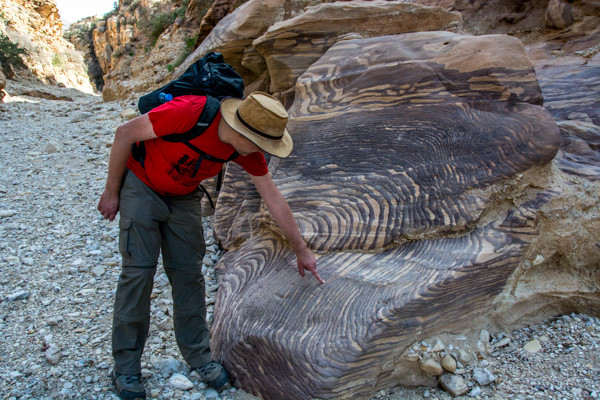
During the whole 10 hours of walking on that day we met only 4 people: a group of hunters who greeted us warmly before disappearing into the shrubs with their rifles. We were still some way from our camp spot at sunset, and we walked the final 2 km in pitch darkness, arriving far later than planned at the basic camp set up at the remote Shkaret Umseid by our Bedouin host. The lentil soup and grilled chicken he had prepared was particularly well deserved that night.
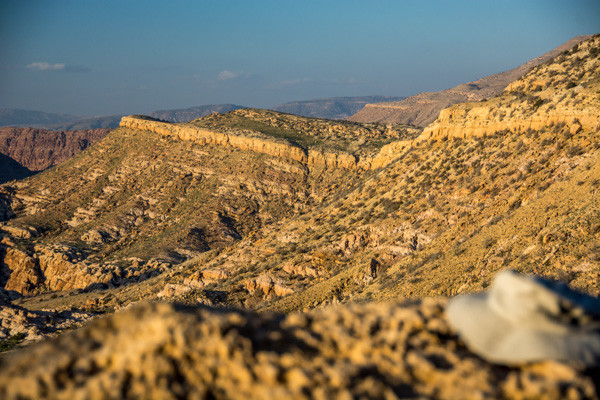
The final day was considerably easier, although by now our aching legs and feet were making each kilometre feel like a mile. Little Petra was our lunch stop. This Nabatean settlement may lack the size and splendour of the main Petra site, but the site is every bit as important a part of the Petra story. It was here that visitors to the ancient city were accommodated (few were allowed into the Nabatean capital), and it was in Little Petra that most of the city’s trade was done. There are several impressive carved façades, and despite being free to visit, we saw no more than 10 visitors in the hour or so we were there.
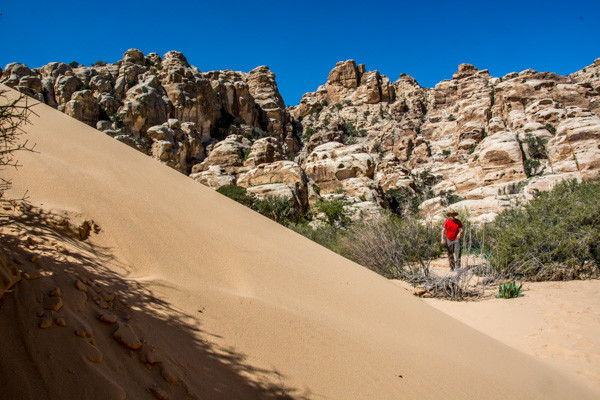
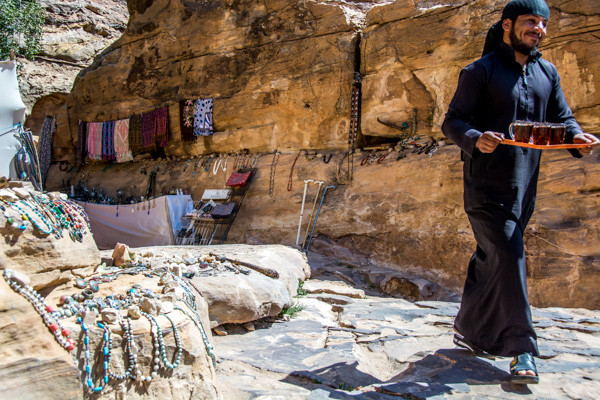
From Little Petra to Petra is around an 8 km walk, first along a dusty road and then up and down a series of steep steps. We were met by a strong wind for this final stretch, particularly ill-timed as some stretches pass along a narrow ledge carved into the sandstone mountain, with a sheer drop which I tried as hard as possible to block out of my mind. Murad showed us just how much more precarious the path had been until it was improved in 2013; we were grateful we hadn’t heard of the trek before our previous visit.
Our path entered the Petra site at the Monastery, and we were very excited to glimpse our first view of the famous façade. I sat with Murad enjoying a glass of juice before we descended towards the centre of Petra, feeling quietly smug from our efforts as we let the handful of other visitors pass us by on their mules.
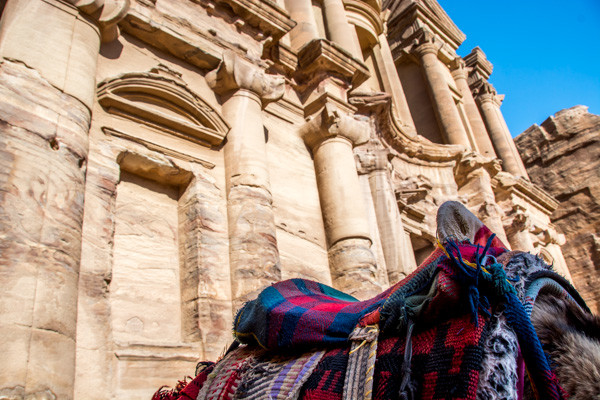
You can find other posts from the Digital Nomad project on the National Geographic Traveller website.




